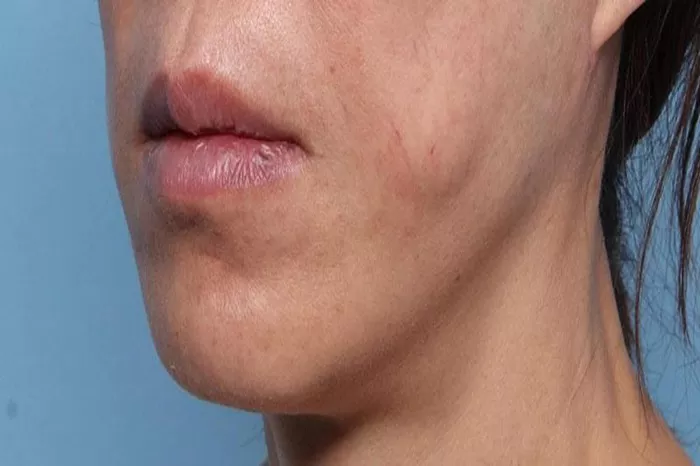Understanding the buccal fat pad and its location is essential for anyone interested in facial anatomy, cosmetic procedures, or general health. The buccal fat pad plays a significant role in the shape and contour of the face. This article will explore the location, structure, and functions of the buccal fat pad, as well as its implications in cosmetic and medical treatments.
What is the Buccal Fat Pad?
Definition and Composition
The buccal fat pad is a distinct, encapsulated mass of fat located in the face. Unlike subcutaneous fat, which lies beneath the skin, the buccal fat pad is situated deeper within the facial structure. It is composed mainly of adipose tissue and is surrounded by a thin layer of connective tissue.
Historical Background
The buccal fat pad was first described by Heister in 1732. Over the years, its significance in both medical and cosmetic fields has grown, leading to numerous studies and procedures centered around this unique fat deposit.
Location of the Buccal Fat Pad
Anatomical Position
The buccal fat pad is located in the midface, specifically in the cheek area. It resides between the buccinator muscle, which is responsible for holding the cheek against the teeth, and several other facial muscles, including the masseter and the zygomaticus major.
Detailed Anatomy
Anteriorly: It extends towards the front of the face, close to the corner of the mouth.
Posteriorly: It stretches towards the back, near the masseter muscle and the parotid gland.
Superiorly: It reaches upwards towards the zygomatic arch.
Inferiorly: It goes downwards, nearing the mandible.
Relationship with Surrounding Structures
The buccal fat pad is in close proximity to several key facial structures. These include the parotid duct, which carries saliva from the parotid gland into the mouth, and important nerves like the facial nerve branches, which control facial expressions.
Functions of the Buccal Fat Pad
Structural Support
The primary function of the buccal fat pad is to provide structural support to the face. It helps maintain the fullness of the cheeks and contributes to the overall facial contour, playing a crucial role in the youthful appearance of the face.
Protective Cushion
The buccal fat pad acts as a cushion, protecting facial muscles and nerves from external trauma. It absorbs shock and pressure, safeguarding the delicate structures within the midface.
Role in Facial Movement
The buccal fat pad allows for smooth movement of facial muscles during activities such as chewing, speaking, and smiling. It prevents friction between muscles and enhances the efficiency of facial movements.
See also: Is Buccal Fat Removal Safe?
Implications in Cosmetic Procedures
Buccal Fat Removal
Buccal fat removal, or buccal lipectomy, is a cosmetic procedure aimed at reducing the size of the buccal fat pad to create a more sculpted facial appearance. This procedure is popular among individuals seeking a slimmer, more contoured look.
Procedure Overview
Consultation: A thorough consultation with a cosmetic surgeon to discuss goals and expectations.
Surgical Technique: The surgeon makes a small incision inside the mouth, removes a portion of the buccal fat pad, and then closes the incision with sutures.
Recovery: Patients typically experience mild swelling and discomfort, with full recovery within a few weeks.
Facial Rejuvenation
In addition to removal, the buccal fat pad can be repositioned or augmented to enhance facial volume and rejuvenate the appearance. This technique is often used in conjunction with other facial surgeries, such as facelifts or cheek implants.
Procedure Overview
Consultation: Detailed assessment of facial structure and desired outcomes.
Surgical Technique: The surgeon repositions or augments the buccal fat pad to enhance facial volume.
Recovery: Similar to buccal fat removal, with minimal downtime and quick recovery.
Medical Considerations
Buccal Fat Pad in Pediatrics
In infants and young children, the buccal fat pad is relatively larger compared to adults. This contributes to the characteristic chubby cheeks seen in babies and plays a role in their ability to suckle effectively.
Impact of Aging
As individuals age, the buccal fat pad may diminish in size, leading to a loss of facial volume and the development of a gaunt appearance. Understanding this process is essential for age-related facial treatments.
Role in Pathology
The buccal fat pad can be involved in various medical conditions, such as tumors or infections. Recognizing these pathologies and their impact on facial anatomy is crucial for accurate diagnosis and treatment.
Conclusion
The buccal fat pad is a vital component of facial anatomy, contributing to the shape, volume, and functionality of the face. Its location within the midface and its interactions with surrounding structures highlight its importance. Whether in cosmetic procedures or medical treatments, understanding the buccal fat pad is essential for achieving desired outcomes and maintaining facial health.
By comprehending the anatomy and functions of the buccal fat pad, individuals can make informed decisions regarding cosmetic enhancements and medical treatments. This knowledge empowers patients and practitioners alike to approach facial aesthetics and health with confidence and precision.
Related topics:
Why Is Buccal Fat Removal So Popular?
What Is It Like Before And After Fat Removal Surgery?
Can I Remove Buccal Fat Naturally?


